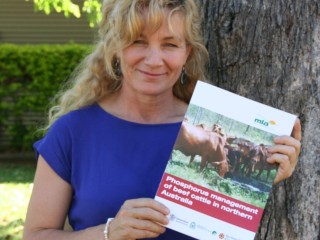 As northern producers enter winter on the back of minimal summer rain, choosing between feeding and off-loading livestock can be tough, but assessing options helps balance the short and long-term impacts of dry season management decisions.
As northern producers enter winter on the back of minimal summer rain, choosing between feeding and off-loading livestock can be tough, but assessing options helps balance the short and long-term impacts of dry season management decisions.
Producers still have options so now is a crucial time to assess how to approach the next few months.
If you have pasture available, create a forage budget to assess how many stock you can retain, and for how long. Take into account that feeding supplements can stimulate dry matter intake of pasture, increasing the rate pasture depletes.
Conducting a diet quality analysis allows a more precise decision on what and how much to feed. Symbio Alliance is the commercial provider of the F.NIRS (faecal Near Infrared Reflectance Spectroscopy), and can analyse dung samples to determine dietary crude protein and digestibility, to determine if cattle require protein only or an energy supplement.
After assessing pasture condition, ask:
- If I have to feed lick until a break in the season, will I retain stock and supplement?
- How long can I afford to feed stock? Energy supplements cost between 30 and 90¢/ head/day. There is potential for supply shortages and price increases later in the season, so consider forward contracting energy supplements.
- If there is no available pasture, can I reduce stocking rates by agisting cattle or leasing country? Available paddocks can become scarce.
- Alternatively, do I need to sell livestock? Assess cattle that are not critical to your business.
Feeding stock can be expensive and stressful so, before you start, calculate how long you can afford to feed them and what price you will need to get for these cattle to cover the cost of feeding.
Reducing stocking rates will ensure pasture recovery is quicker when the season does improve, as well as encourage the growth of more desirable species.
Before selling stock, consider:
- Whether selling all steers will affect cash flow later this year and next year.
- Cows in their final trimester of pregnancy have higher nutrient requirements than dry, empty or early-pregnant breeders but are a more valuable unit to sell.
- Livestock that are weak and in backward store condition should not be transported.
- Weaning earlier (down to 60kg) will take pressure off breeders.
- Whether you can keep weaner heifers on a positive plane of nutrition (gaining at least 100g/day from weaning to mating) so fertility is not compromised.
- Whether you can manage the production gap in two years if you sell all heifer calves now.
Seek support from:
- Your local pasture agronomist for feed budget advice
- Symbio Alliance
- Stocktake Plus app to conduct a feed budget in the paddock
- Queensland Livestock Transport Guide
This article was first publised on Meat and Livestock Australia's website
